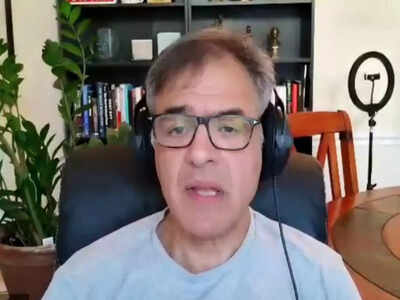The US intelligence community believed that India and Pakistan were on the brink of war in 2002, following the Parliament attack (Dec 2001) and the tense military standoff that followed under Operation Parakram, former CIA officer John Kiriakou said. Such was the threat perception that families were evaucated from Islamabad, he added. The State Department at the time was urging restraint on both sides, essentially advising that if a fight were unavoidable it should be kept short and strictly conventional, because the introduction of nuclear weapons would transform the situation for everyone.Even as the CIA in 2002 chanced upon evidence connecting al-Qaida and Lashkar-e-Taiba, the US decided that its relationship with Pakistan “is bigger than India, Pakistan…we needed the Pakistanis actually more than they needed us at this point”.LeT-Qaida Link“…In March of 2002, we raided a Lashkar-e-Taiba safe house in Lahore. And in that house, we captured three Lashkar-e-Taiba fighters who had with them a copy of the al-Qaida training manual. And it was the first time, analytically, that we were able to connect Lashkar-e-Taiba with al-Qaida. I remember receiving a cable from the deputy director of the CIA for intelligence congratulating us on finding this training manual, saying it was the very first time that we could attach the Pakistani govt to al-Qaida,” he said. Asked about the issue not being highlighted, he said the decision was made at the White House. “And the decision was that that the relationship is bigger than India, Pakistan. At least temporarily. The relationship, we needed the Pakistanis actually more than they needed us at that point. We were happy to throw money at them. That’s what they responded to. But we really needed them to let us base our drones in Balochistan, for example,” he said.Kiriakou pointed to India’s stated posture on nuclear coercion, saying New Delhi has warned it will not tolerate nuclear blackmail and will respond decisively to any terror attack. He highlighted a string of Indian responses to terrorism over recent years, including surgical strikes across Line of Control in 2016, Balakot airstrikes in 2019, and Operation Sindoor in May of this year.‘Millions of dollars’ to Pak intelAmerican defence contractor funds and cash rewards handed out in Pakistan over decades of counterterrorism cooperation with US enriched some ISI officers, former CIA officer he said. “I feel that Pakistani groups with an eye towards India benefited because of those American defence contractor monies. Their defence parts were all turned towards India. We paid tens of millions of dollars in cash as rewards to the Pakistani intelligence service. And God knows what they did with that money,” he said.‘Qaida Plant’ & Osama EscapeThe former CIA officer also referred Osama bin Laden escaping after CIA had tracked him down soon after 9/11. “We believed in Oct of 2001 that we had Osama bin Laden and the al-Qaida leadership cornered at Tora Bora. We did not know that the translator for the commander of Central Command was actually an al-Qaida operative who had infiltrated the US military. We told him to come down the mountain. And he said through the translator, can you just give us until dawn? We want to evacuate the women and children and then we’ll give up… What ended up happening was bin Laden, dressed as a woman, escaped under the cover of darkness in the back of a pickup truck into Pakistan,” he said. Go to Source



